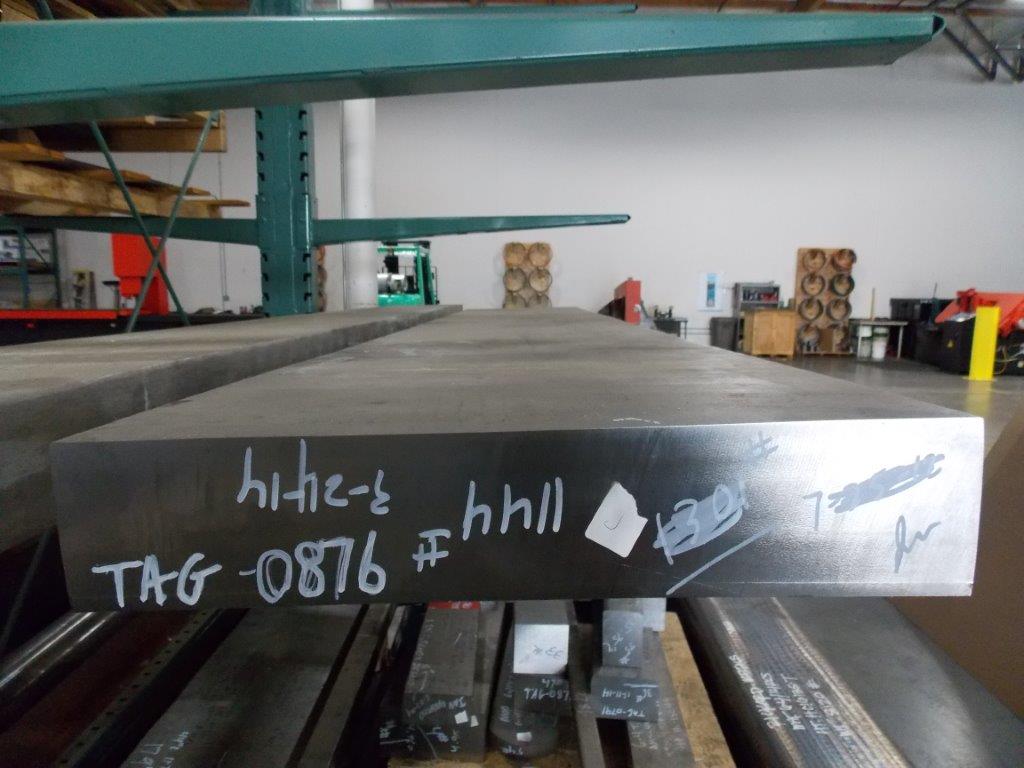Ti-10V-2Fe-3Al (also known as 10-2-3 Titanium) is a near-beta (β) titanium alloy, in which the combination of high strength and high toughness is superior to any other commercial titanium alloy. A wide range of strengths and corresponding toughness is achievable through appropriate selection of forging parameters and heat treatment. This alloy is used in applications up to 600F where medium to high strength and high toughness are required in bar, plate, or forged sections up to 5 inch thick. Ti 10-2-3 is typically used in many applications including airframe components, compressor blades, discs, wheels, and spacers. Ti-10V-2Fe-3Al is primarily used in forgings. Standard specifications include AMS 4983, AMS 4984 and more.
At Rickard Specialty Metals, we have 25+ years of supplying Ti-10V-2Fe-3Al to your custom measurements and shapes. Our forging process includes open die forgings, ring rolling and more. See below for a list of common titanium 10-2-3 forged shapes, including round/flat bar, and additional product forms we offer.
NOMINAL COMPOSITION
- V 9 – 11
- Al 2.6 – 3.4
- Fe 1.6 – 2.22
- O .13 max
- C .05 max
- N .05 max
- H .015 max
- Y .005 max
- Ti Balance
- Remainder Each .1 max
- Remainder Total .3 max
STANDARD SPECIFICATIONS
- AMS 4983
- AMS 4984
- AMS 4986
- AMS 4987
- UNS R56410
Ti-10V-2Fe-3AI TITANIUM FORGINGS
- Ti-10V-2Fe-3AI Round Bar
- Ti-10V-2Fe-3AI Flat Bar
- Ti-10V-2Fe-3AI Rectangular Bar
- Ti-10V-2Fe-3AI Rolled Rings
- Ti-10V-2Fe-3AI Forged Rings
- Ti-10V-2Fe-3AI Disc
OTHER PRODUCT FORMS
- Ti-10V-2Fe-3AI Sheet
- Ti-10V-2Fe-3AI Plate
- Ti-10V-2Fe-3AI Extrusion
- Ti-10V-2Fe-3AI Extrusion angles
- Ti-10V-2Fe-3AI Billet
- Ti-10V-2Fe-3AI Ingot
- Ti-10V-2Fe-3AI Machined Parts
Ti-10V-2Fe-3AI Additional Information:
Physical Properties
Hardness: Varies from HRC 35 – HRC 42, depending on specification and strength level chosen
Density: 0.168 lbs/cubic inch
Modulus of Elasticity: 15-16 MSI in STA condition
Thermal Expansion: 5.4 x10-6 in/in/F, RT-800F
Machining
Ti-10-2-3 is Somewhat more difficult to machine than Ti-6Al-4V but less difficult than all beta titanium alloys.
Welding
The weldability of this Ti 10-2-3 is judged to be comparable to that for Ti-6Al-4V. It can be electron beam welded using parameters similar to those for Ti-6Al-4V. As expected, variations in heat treatment produce significant differences in mechanical properties, but weld properties are generally comparable to those of the base metal.
Forming
Forming for Ti-10-2-3 is considered moderately good in the solution annealed condition and better than near alpha alloys and alpha + beta alloys.
Corrosion Resistance
Corrosion resistance is generally excellent for Ti-10V-2Fe-3AI, although, the alloy is sometimes susceptible to salt stress corrosion cracking.
Heat Treatment
Ti 10-2-3 can be processed and heat treated to provide a wide range of mechanical and fracture properties. Variations in strength/toughness combinations and fatigue properties result as a function of working history and heat treatment. Increasing the volume fraction of primary alpha phase reduces the ductility at comparable yield strengths for the alpha-aged condition. The beta-solution treated conditions with no primary alpha have lower ductility than alpha + beta solution treated conditions.
For a single aging temperature, increasing the solution temperature from about 1300F to 1500F results in an increase in Fty and Ftu with a decrease in tensile ductility. Solution treating above the beta transus can result in very low tensile ductility for high-strength conditions. The general effect of increasing the aging temperature in the region between 900F and 1100F is to decrease the tensile strengths and increase the tensile ductility with the magnitude of the effects depending on the forging practice and testing direction. Standard heat treat procedures for forgings are specified in the AMS forging specifications below.
Forging
The forging process for Ti-10V-2Fe-3AI consists of initial mechanical working above the beta-transus temperature and finish working below the beta-transus temperature, in the alpha/beta zone. The amount of mechanical working in the finish operation determines the microstructure, which influences the response to subsequent heat treatment.
Mechanical Properties
Ti-10V-2Fe-3AI Forgings per AMS 4983, AMS 4984, AMS 4986 and AMS 4987:
| 0.2% YS | UTS | E% | RA% | K-1C | |
| AMS 4983 | 160 KSI | 180 KSI | 4 | To Be Reported | 40KSI √inch |
| AMS 4984 | 160 KSI | 173 KSI | 4 | To Be Reported | 40KSI √inch |
| AMS 4986 | 145 KSI | 160 KSI | 6 | 10 | 55KSI √inch |
| AMS 4987 | 130 KSI | 140 KSI | 8 | 20 | 80KSI √inch |

